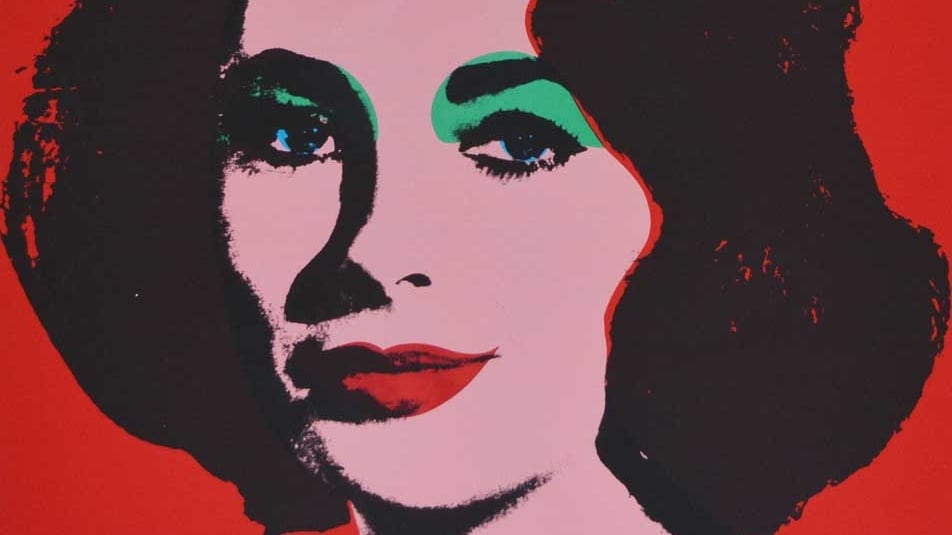
ANDY WARHOL EXHIBITION IN DUBAI SHOWS 'MAJOR INFLUENCE' HE HAS HAD ON CONTEMPORARY CULTURE
Even for those who are not versed in the art world, Andy Warhol's name carries weight. Visual artist, film director, producer and a leading figure in the pop art movement, his works from silk screen celebrity portraits to Campbell Soup Can prints are so embedded in visual culture that their influence is immeasurable.
A new exhibition at The Foundry in Downtown Dubai aims to show the global impact of Warhol’s modern art. On show until October 31, Andy Warhol: The Glam Factory, features more than 100 original works by the American, most of them never seen before in the UAE. “Dubai is a hub of culture. It's a global city and we wanted to show Andy Warhol here,” curator Nada Ghandour tells The National.
Split into two parts, the exhibition offers those who are familiar with Warhol’s work, as well as novices to his oeuvre, a comprehensive look into one facet of his artistic evolution. The first part is modelled on Warhol’s Silver Factory, his famed New York Studio also known for its parties and famous attendees. It was in this studio that Warhol employed and directed workers to make silkscreens and lithographs, including his world famous Marilyn Monroe series.
The second part of the exhibition is entitled Studio 54: The Glamorous Nightlife. The interactive room is dedicated to the famed nightclub, where Warhol was a regular, and his fascination with the club's mix of celebrities, artists and patrons, which influenced his art and his ability to capture the spirit of the era. The space in the exhibition will give visitors the opportunity to understand and experience a version of New York's nightlife at the time that left a powerful impression on Warhol.
He was not only a major influence on contemporary culture but he was, he is, contemporary culture
Nada Ghandour
A common thread across both spaces is Warhol’s interest and influence with fame, wealth and celebrity culture. This facet of Warhol’s career, Ghandour elaborates, is a focal point of the exhibition.
“He was fascinated by the rich and famous and he became rich and famous,” Ghandour says. “Think about it, who is not famous nowadays? Thanks to social media, everyone is a bit famous. The angle, how we are treating the exhibition is to focus on this idea, because it's relevant, it's important to who he was and his influence.”
Tracing his rise from a modest illustrator to an innovative and revolutionary superstar of the contemporary art world, the exhibition will feature a curated selection of his most famous works, including his screen prints, photos, as well as the famed Monroe portraits.
The exhibition will also showcase how Warhol approached art, not only as an artist who refined the aesthetics and concepts of pop art, but also how he was able to transform himself as a brand and turn his artistic output into a business. Ghandour believes Warhol was the first artist to view his art works more as products than unique items, selling the same pieces in various sizes, and employing a particular marketing strategy.
“He used the three Cs – culture, celebrities and consumer,” she says. “They are the same three Cs we use in marketing today. Andy Warhol used it in his own way – he mixed those three and it worked.”
Warhol’s celebrity portraits are key to understanding why he was so influential to contemporary culture and how we interact with concepts of fame, wealth and legacy. They are the most visually recognisable and popular of his works, but Ghandour believes there is a lack of awareness about how they changed public discourse around the definition of celebrity.
“Before the 1980s, before Studio 54, before all the portraits Andy Warhol made of Armani, Versace or Saint Laurent, if I were to ask anyone who was Dior’s most famous model or muse, no one would know,” she says. “But starting from when he took these portraits, the public all started to know Jerry Hall and these other models and the designers. And this is our culture today, this is what we are living in today. It's important for people to know how it all started.”
Another element of the exhibition that Ghandour believes will fascinate people is how Warhol blurred the lines, not only between the individual and celebrity, or between art and commerce, but also between art and technology.
“Andy Warhol was one of the first artists who used technology to draw, to paint,” she says. “He blurred the frontiers between art and production and that's what makes him different and very modern at the same time. And this is what we are also showing today in this exhibition.”
Ghandour believes the exhibition presents a unique opportunity to show pop art's influence on contemporary culture and a rare opportunity to see Warhol’s original works. On a larger scale however, the exhibition is a window into the psyche of an a colossal figure who was more than an artist.
“I think that we should think of Andy Warhol as more than an artist,” Ghandour says. “What we are trying to say here, what we are trying to show, is that he was not only a major influence on contemporary culture but he was, he is, contemporary culture.”
2024-09-19T10:12:18Z dg43tfdfdgfd